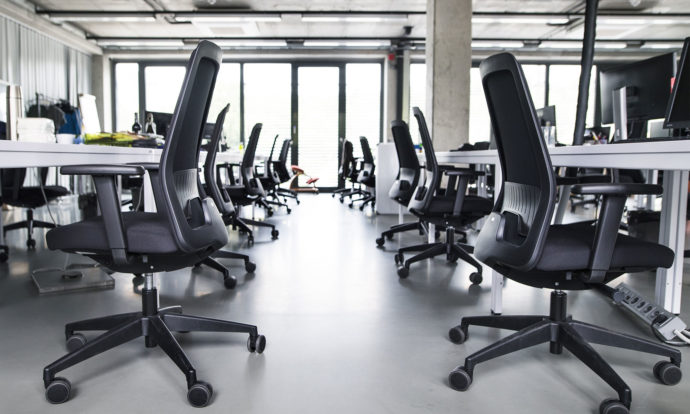Even before COVID-19 struck in the first quarter of 2020, there was a lively debate about the role of virtual offices in facility management. Virtual work was defined by tasks conducted outside the traditional physical work space. That definition has broadened to encompass allowing home-based teleworkers, after-hours workers, on-the-road technicians, offsite service partners, and even outsourced workers.
As we begin the recovery from the pandemic, this trend has accelerated and will continue. Facility management and operations will have evolving needs—so to remain productive and profitable, clients and their facility service companies must find the best way to accommodate them. Thus, what is the best way to create an efficient facility operation through a virtual workplace?
The answer lies in ensuring your facility service leadership keeps four key concepts at the forefront of design and practice. The concepts to remember are strategy, communication, productivity and balance.
Focus on strategic priorities
During the once-in-a-lifetime crisis we all are going through, many organizations became distracted from their strategic priorities to address the health, safety and ongoing productivity issues that the pandemic created. Now is the time to refocus on the corporate priorities established, or adjust them to reflect the new circumstances. A teleworking or hybrid model with a virtual workplace will likely be part of the path forward. Leaders will need to act now to help their employees and organizations make the transition, or risk a loss of momentum and a loss of talented people. Be it a health care clinic, a transportation hub or a power generation plant, you need to build a work environment that ensures your professionals stay engaged with your vision and mission, whether they are onsite, offsite or working remotely from home.
Keep Communication Frequent, Transparent and Consistent
Virtual working can leave members of your team isolated. To overcome this, successful leaders and organizations communicate frequently, transparently and consistently. When you have a widely distributed team, you need the digital tools and infrastructure that best enable daily or weekly interactions. During the COVID-19 pandemic, many organizations heard from leaders often and they spent extra time explaining the business impacts, decision making, board feedback, and leadership mindset. A recent report in the MIT Sloan Management Review cited the use of webinars and video updates as more effective than simple emails. The same survey also found the greatest obstacle to effective communication was mixed messages coming from the organization. Your facility needs to be consistent, regardless of the function or level in the organization. It could be from Human Resources, Finance, Technology, Legal or Operations, or from the CEO to a front-line lead—in all cases, the messages must be consistent.
Stay productive and engaged
To keep teams productive and engaged, enterprises must use technology to improve physical infrastructure and deliver optimal solutions and services for use across the new work environment. The pandemic proved some of the benefits from task productivity gains, but it also saw six in ten workers feel isolation, decreases in collaborative productivity, and disconnection that led to fewer perceived rewards and career promotions. Keeping productive and engaged involves a rethink. Everything from ergonomic workstations to collaboration tools like Microsoft Teams or Zoom, along with other services and amenities for employees, must create the optimal work environments that serve onsite, offsite and remote workers. To keep facility operations seamless, it is important to integrate the physical and the digital workplaces, and to actively signal staff and facility service companies that they are part of the success of the organization.
Keep work and life in balance
Virtual workplaces have posed another paradox. Enabling remote work may have given time back to employees through less commuting and more flexible schedules for family. But for some people, it has also blurred the lines between the personal and the professional, and created a perception of 24/7 availability to their employer. Studies indicate that remote workers log more hours than their onsite counterparts. The remedy, here, for ensuring your people avoid burnout is a combination: time allowances for flexible scheduling to handle personal obligations, workload adjustments for family responsibilities, opportunities for team building and social interaction, and time blocking and personal days for rest and relaxation. These steps all sustain the goal of a healthy work/life balance for every member of your staff.
Many leaders emerging from the pandemic are keen to redesign facility workplaces to capture the benefits of what we have learned from virtual work models during the pandemic. We can help with the right solutions and create an efficient facility operation that reflects your strategy, encourages communication, promotes productivity and preserves the work/life balance that is right your people.
Black & McDonald is an integrated, multi-trade Facility Services provider, with experience operating and maintaining a diverse portfolio of facilities across both the public and private sectors. Our experience includes commercial offices, healthcare environments, major transportation hubs and airports, cultural facilities, life science laboratories, municipal government properties, educational institutions, data centres, utility infrastructure, and major manufacturing and distribution plants.

















